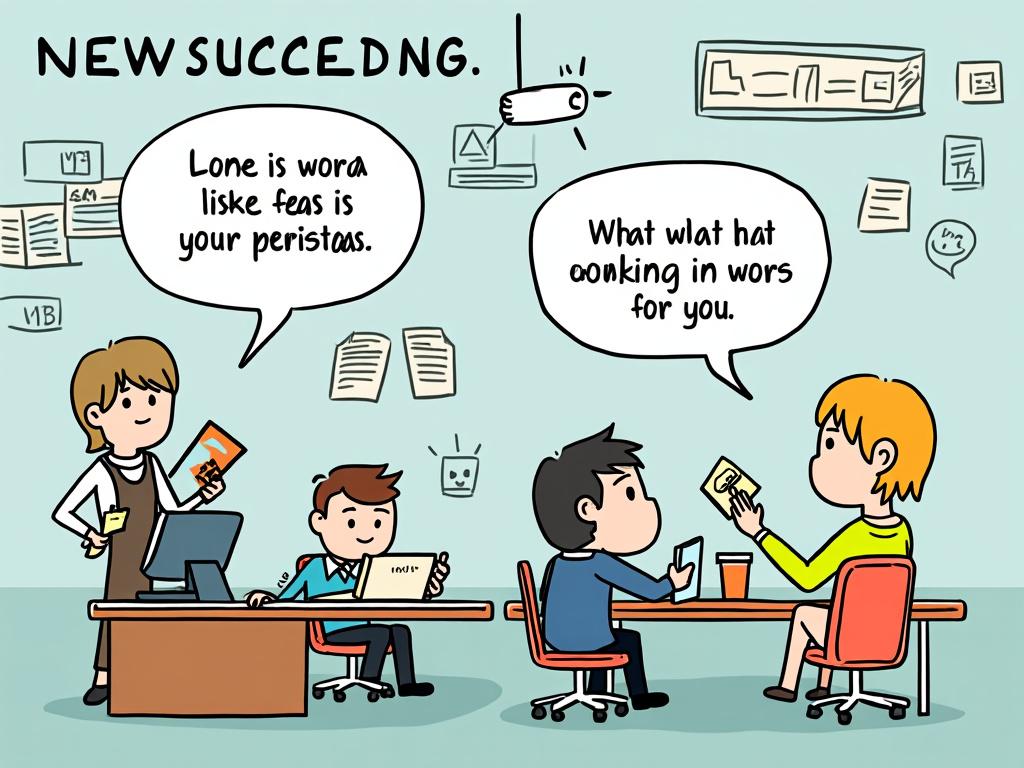
Do Small Companies in Estonia Need an Audit? Complete Thresholds Guide
Reading time: 11 minutes
Table of Contents
- Introduction to Auditing Requirements in Estonia
- Estonian Audit Thresholds Explained
- Types of Audits and Reviews in Estonia
- Exemptions and Special Cases
- Benefits of Voluntary Audits for Small Companies
- Preparing for an Audit: Practical Steps
- Understanding Audit Costs in Estonia
- Conclusion
- Frequently Asked Questions
Introduction to Auditing Requirements in Estonia
Navigating Estonian audit requirements can feel like deciphering a complex puzzle—especially for small business owners focused on growth rather than regulatory compliance. Yet understanding these requirements isn’t just about ticking boxes; it’s about establishing a foundation for financial transparency and business credibility.
Estonia has positioned itself as Europe’s digital frontrunner, with streamlined business processes that attract entrepreneurs worldwide. However, even in this digital paradise, financial oversight remains essential. The question that keeps many entrepreneurs awake at night is straightforward: “Does my small Estonian company need an audit?”
The short answer? It depends on your company’s size, structure, and financial parameters—but don’t worry, we’re about to break this down into practical, actionable insights.
Here’s the reality: while Estonia offers one of Europe’s most business-friendly environments, its audit requirements follow clear thresholds designed to balance regulatory oversight with entrepreneurial freedom. Understanding these thresholds isn’t just about compliance—it’s about strategic planning that can save you significant time and resources.
Estonian Audit Thresholds Explained
Estonian law establishes specific financial thresholds that determine whether your company requires a statutory audit or a review. These thresholds are based on three primary metrics: total assets, annual revenue, and number of employees.
Statutory Audit Thresholds
A statutory audit becomes mandatory when a company exceeds at least two of the following thresholds:
- Total assets: €4,000,000
- Annual revenue: €8,000,000
- Average number of employees: 50
Let’s put this into perspective: if your company has assets of €4.5 million and revenue of €8.5 million but only 40 employees, you would still require an audit because you’ve exceeded two of the three thresholds.
Limited Review Thresholds
A limited review (less comprehensive than a full audit) is required when a company exceeds at least two of these lower thresholds:
- Total assets: €2,000,000
- Annual revenue: €4,000,000
- Average number of employees: 25
For example, a technology company with 30 employees, €3 million in assets, and €4.5 million in revenue would require a limited review but not a full statutory audit.
These thresholds are evaluated based on the company’s annual report figures, and the requirement applies to the financial year following the one in which thresholds were exceeded.
Real-World Application
Consider this scenario: TechEst, a growing software development company based in Tallinn, has experienced rapid expansion. At the end of 2022, they reported:
- Total assets: €2.5 million
- Annual revenue: €4.2 million
- Average employees: 28
Having exceeded two of the limited review thresholds, TechEst would need to arrange a limited review for their 2023 financial statements. The company’s CFO now needs to budget for this process and ensure their financial documentation meets the necessary standards.
Types of Audits and Reviews in Estonia
Understanding the difference between various audit types can save you both time and resources. Estonian regulations recognize several distinct levels of financial scrutiny:
Full Statutory Audit
A comprehensive examination conducted by a certified auditor who provides an opinion on whether financial statements present a true and fair view of the company’s financial position. This is the most thorough level of scrutiny and provides the highest level of assurance to stakeholders.
The auditor examines source documents, performs detailed testing of transactions, and assesses internal controls. They will also physically verify assets, confirm balances with third parties, and thoroughly review all significant accounting estimates and judgments.
Limited Review
A limited review provides less assurance than a full audit but more than no review at all. The auditor primarily performs analytical procedures and inquiries rather than detailed testing of transactions and balances.
During a limited review, the auditor will analyze financial statement trends, ratios, and relationships, asking management to explain significant variations or unusual items. However, they typically won’t examine source documents extensively or perform third-party confirmations.
Compilation of Financial Statements
Not technically an audit, a compilation involves an accountant preparing financial statements based on information provided by management. No opinion or assurance is provided regarding the accuracy or completeness of the information.
For small companies below both threshold levels, this is often sufficient. The accountant simply organizes financial information into standard financial statement format, ensuring compliance with Estonian accounting standards.
| Audit Type | Level of Assurance | Approximate Cost Range | Typical Duration | Required For |
|---|---|---|---|---|
| Full Statutory Audit | High | €5,000 – €20,000+ | 3-6 weeks | Companies exceeding higher thresholds |
| Limited Review | Moderate | €2,000 – €6,000 | 1-3 weeks | Companies exceeding lower thresholds |
| Compilation | None | €500 – €2,000 | 1-5 days | Companies below thresholds |
| Voluntary Audit | High | €3,000 – €15,000 | 2-4 weeks | By company choice |
Exemptions and Special Cases
While the general thresholds provide a good starting point, Estonian regulations include several important exemptions and special cases that could affect your company’s audit requirements:
Mandatory Audits Regardless of Size
Some companies must undergo an audit regardless of their size or financial metrics:
- Public interest entities – Including listed companies, credit institutions, insurance companies, and investment firms
- State-owned enterprises – Companies where the government holds a controlling interest
- Certain industry-specific businesses – Such as financial services companies operating under special licenses
For instance, even a small investment firm with just 10 employees and €1 million in assets would require a full audit due to the nature of its operations and potential impact on public financial interests.
Group Companies and Consolidated Statements
The audit requirement becomes more complex for companies that are part of a group:
If a parent company prepares consolidated financial statements, an audit is typically required for the consolidated statements if the group as a whole exceeds the thresholds—even if individual subsidiaries fall below them.
Consider this example: EstGroup OÜ has three subsidiaries, each individually below the audit thresholds. However, when consolidated, the group exceeds two thresholds. In this case, EstGroup would need an audit of its consolidated statements, though the individual subsidiaries might not require separate audits.
“When determining audit requirements for group companies, you must consider both individual entity thresholds and the consolidated position,” explains Marko Karus, an Estonian certified auditor. “Many businesses miss this nuance and find themselves unprepared for audit requirements.”
Benefits of Voluntary Audits for Small Companies
While mandatory audits follow clear thresholds, many small companies in Estonia opt for voluntary audits or reviews. Far from being an unnecessary cost, these can provide significant strategic benefits:
Enhanced Credibility with External Stakeholders
For companies seeking outside investment or credit, an audited financial statement can be invaluable:
- Banks often offer more favorable loan terms for companies with audited statements
- Potential investors gain greater confidence in the reliability of financial information
- Business partners and major customers may prefer working with audited companies
Consider the case of EstTech Solutions, a Tartu-based software developer below the audit thresholds. When seeking a €500,000 investment round, they voluntarily conducted an audit, which not only attracted investor interest but resulted in a valuation 20% higher than initially projected, as reported by the company’s founder.
Improved Internal Controls and Processes
The audit process itself often identifies weaknesses in financial procedures:
“A voluntary audit helped us identify significant inefficiencies in our accounts receivable process,” shares Liisa Tamm, finance director at a mid-sized Estonian manufacturing company. “The procedural improvements we implemented following the audit’s recommendations saved us approximately €30,000 annually—far more than the audit cost.”
Statistical data supports this perspective: according to a 2022 survey by the Estonian Auditors’ Association, 68% of companies that underwent voluntary audits reported identifying at least one significant area for financial process improvement.
Preparing for an Audit: Practical Steps
If your company needs an audit—whether mandatory or voluntary—preparation is key to a smooth, efficient process:
Timeline Planning
Start preparing well before the audit deadline:
- Begin preparation at least 2-3 months before your expected audit start date
- Schedule the audit for a time when key finance personnel aren’t occupied with other major projects
- Consider your business seasonality—avoid scheduling during your busiest periods
Create a detailed timeline working backward from your filing deadline, allowing sufficient time for audit adjustments and any unexpected issues that might arise.
Documentation Preparation
Auditors will request specific documentation. Having these organized in advance significantly reduces audit time and stress:
- Complete trial balance and general ledger
- Bank statements and reconciliations for all accounts
- Accounts receivable and payable aging reports
- Fixed asset register with depreciation calculations
- Inventory lists and valuation methods
- Major contracts and agreements
- Board meeting minutes
- Tax returns and correspondence with tax authorities
Pro tip: Create a dedicated digital folder structure mirroring common audit request categories. This organized approach can reduce document gathering time by up to 40%, according to experienced audit managers.
Staff Preparation
Ensure your team is ready to support the audit process:
“The most efficient audits occur when client staff understand why certain information is being requested and can provide context about business transactions,” notes Kristjan Loik, audit partner at a leading Estonian accounting firm. “Brief your team not just on what documents to provide, but on the underlying business activities those documents represent.”
Designate specific team members as points of contact for different audit areas, ensuring knowledge is distributed rather than concentrated with a single person who might become a bottleneck.
Understanding Audit Costs in Estonia
Audit costs in Estonia vary significantly based on multiple factors, making budgeting challenging for businesses new to the process:
Cost Determinants
Several key factors influence how much your audit will cost:
- Company size and complexity – More complex operations with numerous transaction types typically increase audit hours
- Quality of accounting records – Well-maintained, organized financial records reduce audit time and costs
- Audit firm selection – Fees vary between Big Four firms, mid-tier providers, and smaller local practices
- First-time vs. recurring audit – Initial audits typically cost 25-40% more than subsequent years
According to the Estonian Auditing Board’s 2023 survey, average audit fees range from €3,000 for small companies to over €20,000 for larger operations with complex requirements.
Cost-Saving Strategies
While maintaining audit quality, several approaches can help manage costs:
“The most cost-effective approach is thorough preparation,” explains Eva Kärssin, financial controller at an Estonian technology company. “We reduced our audit fees by approximately 15% simply by implementing a comprehensive audit preparation checklist and ensuring all requested documents were ready before the auditors arrived.”
Other effective strategies include:
- Considering mid-tier audit firms rather than Big Four for less complex businesses
- Negotiating multi-year audit engagements for discounted rates
- Addressing accounting system weaknesses identified in previous audits
- Conducting internal pre-audit reviews to identify and resolve issues
Remember: the cheapest audit isn’t necessarily the most cost-effective. An audit that identifies valuable process improvements may provide greater overall financial benefit than one focused solely on compliance at minimum cost.
Conclusion
Navigating Estonian audit requirements doesn’t need to be overwhelming. By understanding the clear thresholds that determine whether your company needs an audit or limited review, you can plan effectively and avoid unnecessary compliance surprises.
For small companies below the thresholds, freedom from mandatory audit requirements represents an opportunity to focus resources on growth. However, the strategic benefits of voluntary audits—from enhanced credibility with investors to improved internal processes—should not be overlooked as your company scales.
Remember these key takeaways:
- Estonia’s audit thresholds are based on three metrics: total assets, annual revenue, and employee count
- Different levels of assurance (full audit, limited review, compilation) suit different business needs
- Special cases exist, particularly for public interest entities and group companies
- Early preparation significantly reduces both audit stress and costs
- Even below mandatory thresholds, voluntary audits can offer strategic advantages
Whether your Estonian company currently requires an audit or not, understanding these requirements positions you to make informed decisions about financial oversight that align with your business goals and growth trajectory.
Frequently Asked Questions
If my company exceeds just one threshold, do I need an audit?
No, you need to exceed at least two of the three thresholds (assets, revenue, employees) to trigger either a limited review or full audit requirement. This is an important distinction in Estonian regulations that provides flexibility for companies that might have unusual profiles in one particular area. For example, a technology company might have high revenue with relatively few employees and minimal assets, and would not require an audit if only the revenue threshold is exceeded.
How do I find a qualified auditor in Estonia?
All certified auditors in Estonia must be registered with the Estonian Auditors’ Association (Audiitorkogu). Their website maintains a searchable database of qualified professionals. When selecting an auditor, consider their industry experience, firm size relative to your needs, and language capabilities if you require audit reports in languages other than Estonian. It’s also advisable to interview several candidates and request references from companies similar to yours in size and industry to ensure a good fit.
Can I switch from a full audit to a limited review if my company drops below certain thresholds?
Yes, if your company’s financial metrics fall below the full audit thresholds but remain above the limited review thresholds for two consecutive years, you can transition to a limited review for the following financial year. This change should be properly documented in your company records and communicated to relevant stakeholders. Keep in mind that some external parties (such as banks or major investors) might have contractual requirements for full audits regardless of statutory thresholds, so check any agreements before making changes to your audit approach.



